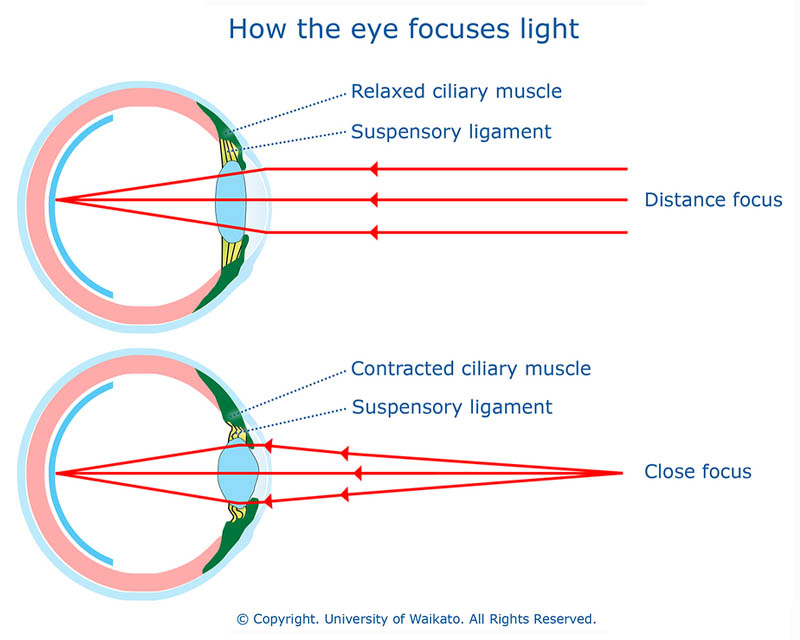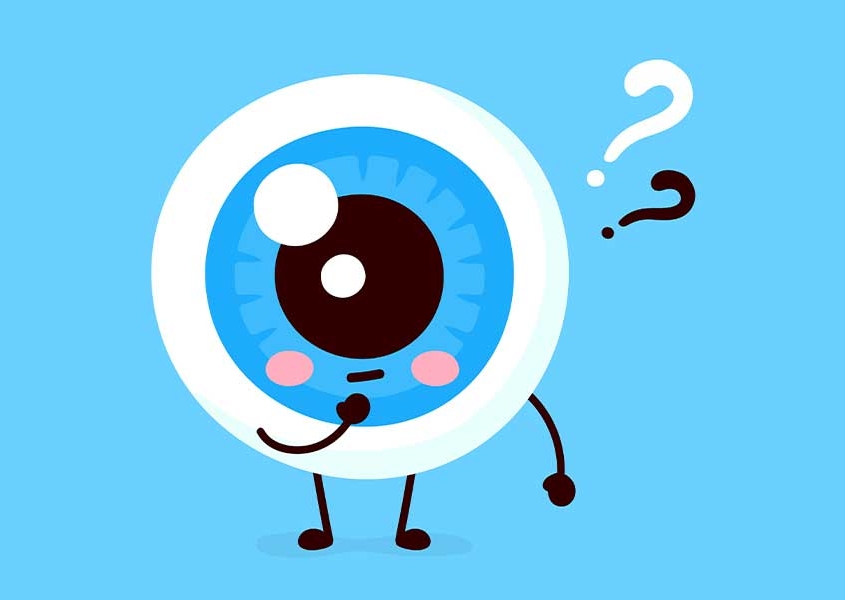Presbyopia Q&A

Medically reviewed by Brad Boyle, OD – Written by Advanced Family Eye Care staff on August 24, 2021 – Last edited on May 31, 2023
 Medically reviewed by Brad Boyle, OD – Written by Advanced Family Eye Care staff on August 24, 2021 – Last edited on May 31, 2023
Medically reviewed by Brad Boyle, OD – Written by Advanced Family Eye Care staff on August 24, 2021 – Last edited on May 31, 2023
Presbyopia is among the most common eye conditions. In fact, everyone will develop some level of presbyopia as they age.
We are Advanced Family Eye Care in the Cedar Valley, with 2 locations in Waterloo and Independence. Here is everything you need to know about presbyopia.
What is presbyopia?
Presbyopia is farsightedness (trouble seeing at close distances) that develops gradually with age. It can also be referred to as “age-related farsightedness” or “age-related vision loss”.
The term “presbyopic” means “of or relating to presbyopia”, i.e. “presbyopic vision” (vision with presbyopia) or “presbyopic glasses” (glasses designed to treat presbyopia).
What are the causes of presbyopia?
When the eye focuses on nearby objects, the ciliary muscle contracts to change the shape of the lens, allowing focus on nearby objects. This process of the eye changing shape to focus is also referred to as accommodation.

Image: University of Waikato
As a person ages, 2 things happen to their eyes – the ciliary muscle weakens and the lens hardens. Both of which reduce the eye’s ability to change shape to focus (accommodate) at close distances.
Thus, presbyopia is caused by the reduction of the eye’s accommodation capability, and is a natural result of the aging process.
What are the symptoms of presbyopia?
As presbyopia develops, you may notice all or some of these symptoms:
- General difficulty seeing close objects clearly
- Blurry vision when reading from a regular distance
- Difficulty reading small print
- Eyestrain, fatigue, or headaches from doing close work such as reading, knitting, or sewing
- The need to hold reading material far away to make the letters clearer.
- Squinting
- The need for bright lighting to make close work easier
How common is presbyopia?
Presbyopia is 100% common.
That’s right, everyone will get some level presbyopia and it is a normal part of the aging process.
So when it comes to dealing with presbyopia, it is not a matter of if, it is a matter of when.
At what age does presbyopia onset?
Presbyopia typically begins in one’s early-to-mid 40’s.
Risk factors for early onset presbyopia (development at an age younger than 40, also called “premature presbyopia”) include certain diseases such as diabetes or multiple sclerosis and certain drugs such as antidepressants and diuretics.
How quickly does presbyopia progress?
After the age of 40-45, presbyopia gradually progresses over a period of around 20 years. At age 60, it usually is fully developed and stops progressing. The progression in severity of presbyopic symptoms will require upgraded eyewear every 2 to 4 years during this period.
How bad does presbyopia get?
Fully progressed presbyopia can result in the complete inability to read or perform other tasks that require close viewing distances when left uncorrected.
Presbyopia does stop getting worse around the age of 60, at which point the progression will plateau. You cannot go blind from presbyopia.
How can I prevent presbyopia?
Presbyopia cannot be prevented any more than aging can be prevented. However, general eye health practices may delay the progression of presbyopia and reduce your risk for developing more serious eye conditions.
Some things you can do to ensure overall eye health include:
- Regular eye exams
- Eating a healthy, balanced diet rich in leafy vegetables, fish, protein, and citrus fruits or juices
- Taking eye vitamins
- Exercising
- Limiting alcohol
- Not smoking
- Controlling chronic health conditions that could negatively impact your vision such as diabetes or high blood pressure
- Wearing sunglasses
- Wearing safety glasses when participating in activities that pose the risk of eye injury
- Wearing the right strength of prescription eyewear
How is presbyopia treated?
Presbyopia can be treated with corrective eyeglasses, contact lenses, and surgery.
Corrective eyeglasses
Eyeglass lenses for presbyopia utilize a convex shape to focus in at close distances. Types of glasses for presbyopia include nonprescription or over-the-counter glasses, prescription reading glasses, bifocals, trifocals, and progressive lenses.
Contact lenses
Presbyopic contact lens solutions include monovision and multifocal lenses.
With a monovision lens approach, one eye is set up for far distance viewing and the other eye is set for close distance viewing.
Multifocal lenses are designed to allow focus for both close distance and long distance vision simultaneously.
Surgery
Surgical procedures for presbyopia include refractive surgery, lens implants, and corneal inlays.
It is important to discuss with your optometrist the pros and cons of each option to decide on the best correction solution for your eyes and lifestyle.
Can presbyopia be cured?
Presbyopia cannot be cured, but it can be corrected with glasses, contacts, or surgery.
Practicing good eye health with proper diet & exercise and regular eye exams may also reduce presbyopia’s impact on the eyes.
Can you have presbyopia in one eye?
In the vast majority of patients, presbyopia develops in both eyes. However, it can develop in only 1 eye in rare cases resulting from eye injury, significant anisometropia, or amblyopia (lazy eye).
Do I have presbyopia?
If you begin noticing blurred vision and are 40 or older, there is a good chance you are beginning to develop presbyopia.
If you are experiencing any sort of vision difficulty at any age, a trip to the eye doctor will get you the proper diagnosis and treatment plan.
The bottom line
Presbyopia will affect everyone at some point in their lifetime. It can be easily corrected with glasses, contacts, or surgery.
If you are experiencing any of the mentioned symptoms, it is important to be seen by your local optometrist to develop the right treatment method and make sure you are not experiencing a more serious eye condition.
If you’re in the Cedar Valley, Iowa area, check out our Independence or Waterloo location to be seen by one of our optometrists.
We dig deep to get to know you and your eyes – that is what makes us eye care beyond the prescription.






